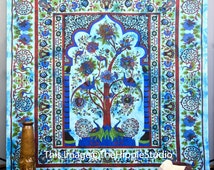
To create her tapestries, Goheen does not work on a loom, but she does follow some basic weaving principles. The weaving is beautiful and fragile and we think it tells the story about us.” “We had the perfect spot for it, and we all fell in love with it. “Shannon made it from eelgrass and Thom made the frame,” Muller says. Joan Muller, education director at the reserve, describes the piece-which Goheen made to coincide with the organization’s 25th anniversary in 2013-as remarkable. Goheen also has permanent installations on display in the admissions office at her alma mater, Connecticut College, and at the Waquoit Bay National Estuarine Research Reserve. “As far as I know,” she says, “no one else does this.” She has made tapestries ranging in size from a mere six inches to a stout seven feet, and her work has been featured in several local exhibits, including a recent solo show at the Thornton Burgess Society in East Sandwich. Goheen understands that her hobby may be considered unusual. Thom makes the perfect shadowbox for each weaving, which helps to keep it protected and displayed in an optimum way.” Other times, I will find a beautiful type of grass, or a colorful flower, and that will inspire me for my next project. If I find a beautiful one, I will then decide what will go in it. “At times, a frame will be the inspiration for a weaving. “I get my ideas for weavings from many places,” Goheen says of her artwork. Some of the foraged items, like sumac, must be dried first others, such as seaweed and eelgrass, work best when wet. Usually, though, she carries the delicate treasures home and sets to weaving them together on her kitchen table. Sometimes, Goheen begins a new weaving on the spot, out in nature-standing at the water’s edge to keep seaweed wet and pliable, or balancing a canvas-to-be in the cattails. She also uses flowers, willow and birch stems, and whatever other seasonal plantings she gathers.

On excursions to the beach or on walks in local woods and fields, Goheen collects natural treasures-grasses and seaweed, berries and wheat-and then folds, twists, and entwines the botanicals into unique and attractive tapestries. Goheen, the “garden whisperer,” is also a skilled weaver, yet her tapestries are made entirely from plants, rather than yarn.


She seems to “understand” the plants, the trees, the flowers-what will work best and how elements will work together-so much so that one client has bestowed on her quite the nickname: “garden whisperer.”Īnd while Goheen, who owns Second Nature Gardenworks of Dennisport with her husband, Thom Huettner, spends much of her day weaving these materials together to build the landscapes of her clients’ dreams, she has another passion that also involves bringing natural elements together to create artistic and eye-catching results. Since growing up in Maine, Goheen has felt a kinship with nature, and she takes a thoughtful approach when selecting the plants, trees, and other materials she uses in these landscape projects, bringing different species together to establish just the right look and feel, while simultaneously creating practical gardens, walkways, and borders. Shannon Goheen is a landscape designer, and for more than a quarter century, her work has involved transforming the grounds of hundreds of Cape Cod homes and businesses into special, one-of-a-kind spaces. Cape Cod artist weaves tapestries from seaweed, grass, and other natural materials.


 0 kommentar(er)
0 kommentar(er)
